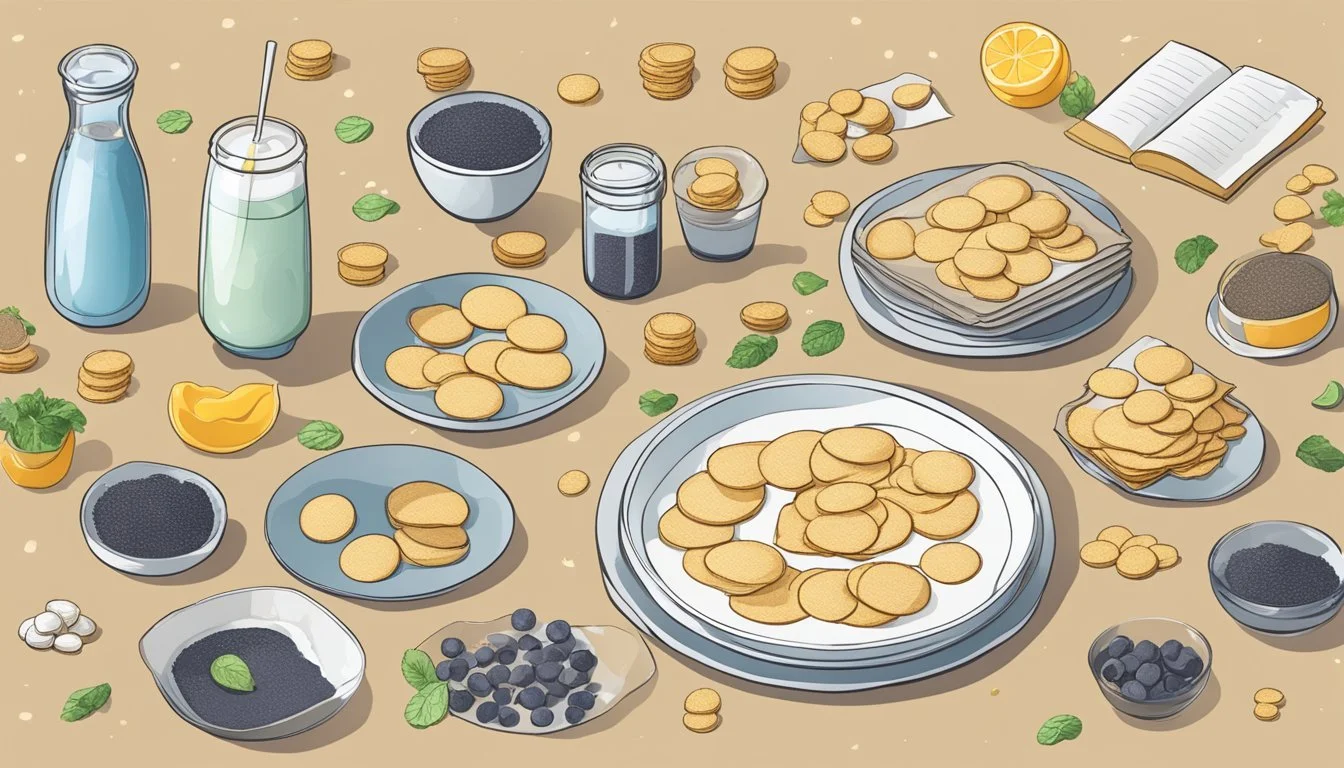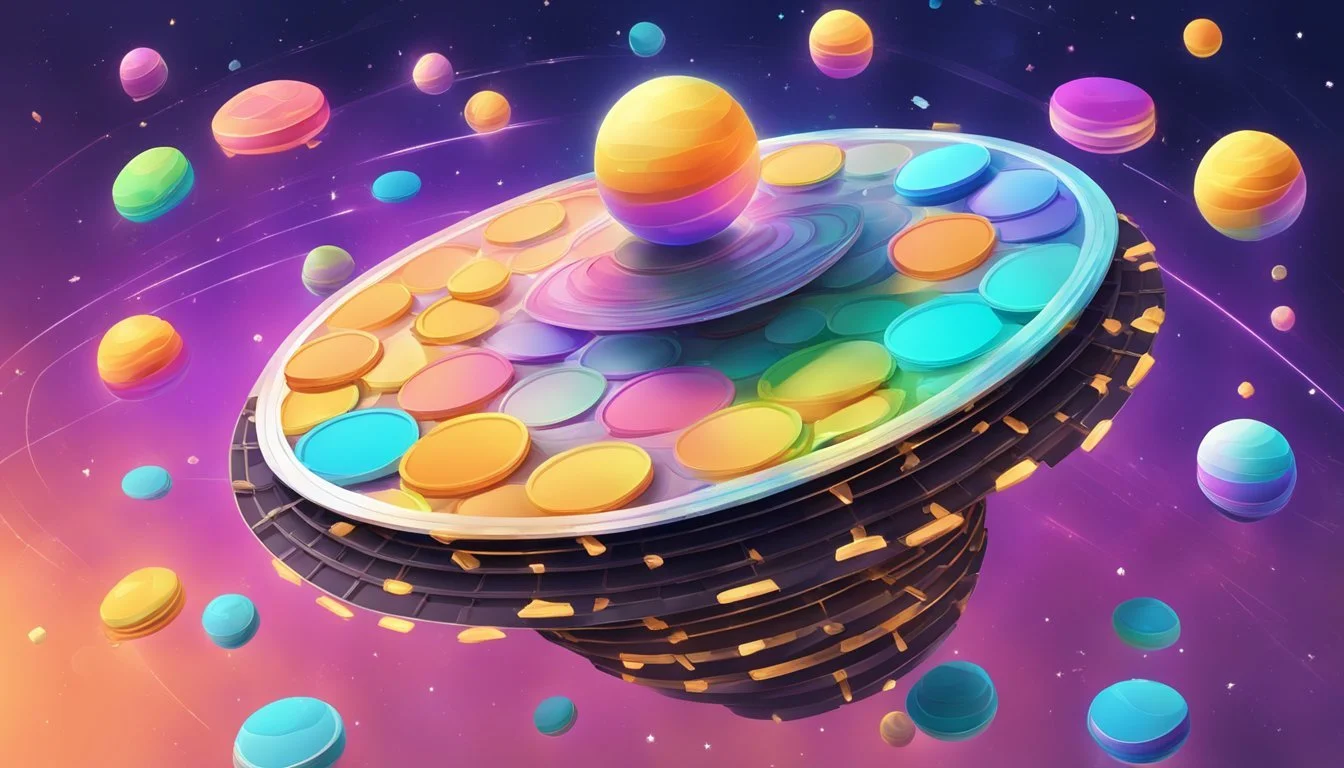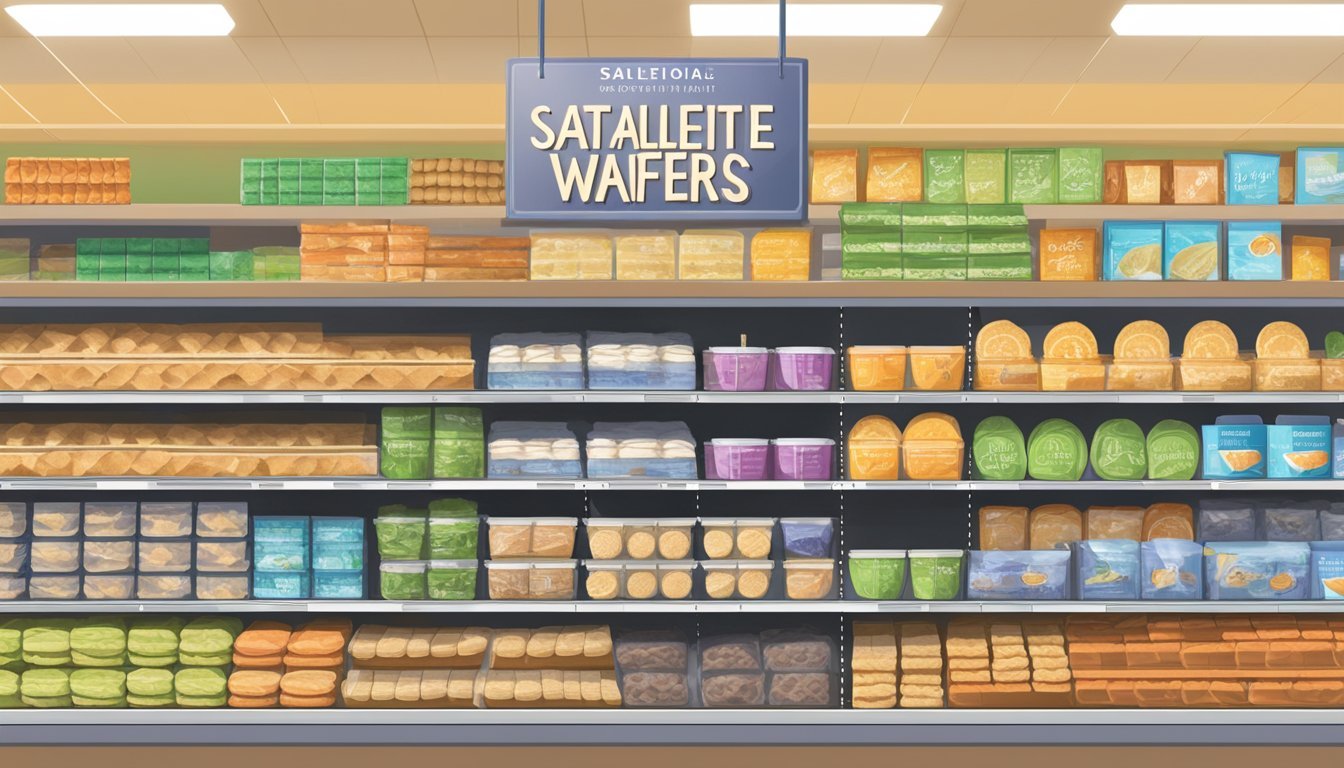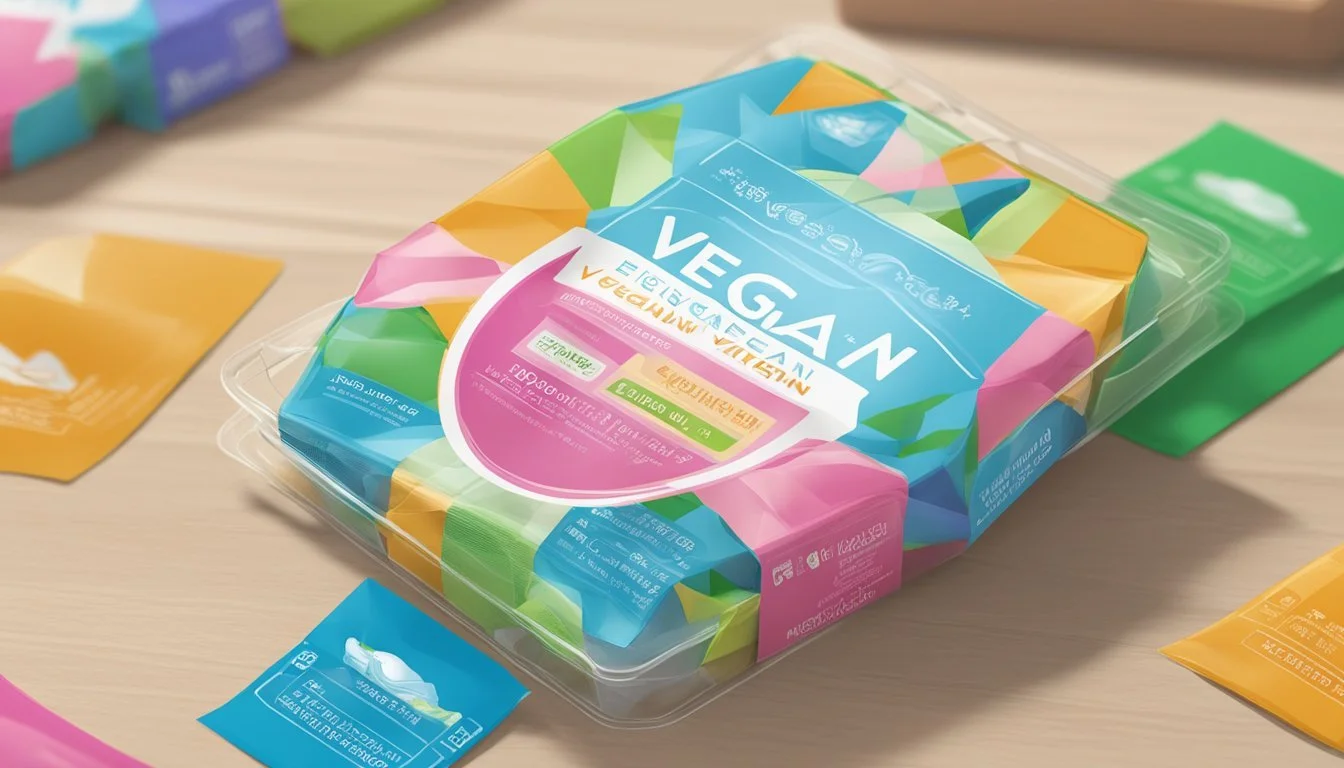Are Satellite Wafers Vegan?
Unveiling the Truth About Their Ingredients
Satellite Wafers, often recognized by their UFO-like shape, have been a staple in the candy world for over six decades. Originally popular in the United Kingdom, these nostalgic treats consist of edible rice paper discs, typically filled with fizzy candy pearls. Their unique design echoes the human fascination with outer space and unidentified flying objects, making them an enduring favorite among confectionery enthusiasts.
With the rise of veganism, many consumers are now questioning whether these childhood candies align with their ethical and dietary choices. The composition of Satellite Wafers is crucial to determining their vegan status. Traditional recipes may contain ingredients derived from animals, although there are variations that cater to plant-based diets. It's essential for vegans to examine the ingredients list, as some products may have switched to cruelty-free formulations to satisfy the growing demand for vegan sweets.
What Are Satellite Wafers?
Satellite Wafers, often synonymous with UFO candies or Flying Saucer candy, are an iconic treat that captures the fascination with outer space prevalent during their time of inception. These candies have been a hit in the confectionery world for over 60 years, marking them as a nostalgic candy within the American market.
Composition:
Outer Layer: Comprised of edible rice paper, which is thin and wafery in texture.
Filling: Typically contains a fizzy, sherbet-like substance or tiny candy beads.
Characterized by their unique UFO shape, Satellite Wafers embody the playful aesthetic of actual flying saucers, conjuring images of intergalactic adventures. They provide a whimsical eating experience where the exterior melts away to release the sweet interior.
Market Appeal:
Nostalgia Factor: With roots tracing back to the same era as classic science fiction, their popularity continues among those seeking a taste of their childhood.
Aesthetic Design: Their space-inspired form factor makes them a constant curiosity and appealing choice for themed parties or events.
Satellite Wafers still enjoy popularity due to their distinct novelty factor and connection to space-themed imagery, ensuring their consistent presence within the confectionary landscape. They are tested by time and enjoyed by multiple generations, maintaining their status as a beloved treat synonymous with the wonder of discovery akin to that of space exploration.
Ingredients Breakdown
When assessing whether Satellite Wafers are vegan, it's essential to scrutinize the ingredients. This section provides a detailed examination, highlighting components that are typically vegan, those that may not be, and crucial allergy information.
Common Ingredients of Satellite Wafers
Satellite Wafers are known for their unique structure consisting of a rice paper shell and a sherbet filling. The rice paper is lightweight and dissolves quickly in the mouth. The sherbet filling, a blend of sugary beads, lends a tart and sweet flavor to the candy. Common ingredients include:
Sugar: Provides sweetness to both the shell and the filling.
Corn Starch: Used as a thickener or stabilizer.
Non-GMO flavors: These are used to enhance the taste without using genetically modified organisms.
Potential Non-Vegan Ingredients
Not all Satellite Wafers may be vegan-friendly due to the presence of specific ingredients. Potential non-vegan components might include:
Beeswax: Sometimes used to give the sugar pearls a shiny appearance.
Artificial flavor: Depending on the source, some artificial flavors might not be vegan.
Milk or dairy derivatives: These could appear in certain flavors or colors used in wafers and are not suitable for vegans.
Allergy Information: Gluten and Dairy
For those with dietary restrictions, it's important to consider the following allergy-related information:
Some wafers can be gluten-free, making them suitable for individuals with gluten intolerances.
Dairy-free options are also available, catering to lactose intolerant and vegan consumers.
Vegan Status of Satellite Wafers
In assessing the vegan status of any confectionery, including Satellite Wafers, it's important to examine the ingredients for animal-derived substances. This section focuses on the specific methods to identify vegan candies and the steps to verify if Satellite Wafers meet plant-based criteria.
Identifying Vegan Candies
Vegan candies are those that do not contain ingredients derived from animals. Key indicators of vegan confectionery include:
The absence of gelatin, commonly sourced from animal collagen
The use of plant-based colorings instead of carmine, which is derived from insects
The exclusion of dairy products, such as milk or whey
The elimination of other animal-derived ingredients such as honey or beeswax
How to Check if Satellite Wafers Are Vegan
To determine whether Satellite Wafers are suitable for a vegan diet, one should:
Review the Ingredient List: Look for non-vegan ingredients commonly found in candies, such as gelatin, dairy, and confectioner's glaze.
Contact the Manufacturer: If the ingredients list is unclear, contact the manufacturer directly to inquire about the sourcing of ambiguous ingredients like natural flavors or lecithin, which could be plant-based or animal-derived.
Research for Vegan Certifications: Check for certifications or logos indicating that a product is vegan. This can be a quick way to ensure the candy aligns with plant-based standards.
By following these steps, individuals can more confidently select candies, including Satellite Wafers, that align with a vegan lifestyle. When vegan alternatives are sought, looking for products explicitly marketed as “vegan” can often save time and ensure compliance with vegan principles.
Nutritional Profile
The nutritional profile of Satellite Wafers is of interest to those monitoring their dietary intake. This section provides specific details on the caloric content and macronutrient breakdown of these confections.
Caloric Content
A serving size of Satellite Wafers, typically 30 pieces weighing approximately 40 grams, contains 157 calories. This amount represents a significant portion of the energy one might need for a light snack.
Macronutrients: Fat, Protein, and Carbohydrates
Fat: Satellite Wafers contain 0 grams of fat, making them a fat-free treat.
Protein: They also have a negligible protein content, not contributing significantly to the recommended daily intake of protein.
Carbohydrates: The primary macronutrient present in Satellite Wafers is carbohydrates. They consist mostly of sugar, which provides quick energy.
Note: The product does not provide a substantial amount of sodium or other micronutrients.
Flavor and Texture
In discussing the sensory aspects of Satellite Wafers, one must consider both its distinctive taste profile and the unique texture that defines the experience of consuming this candy.
The Unique Taste of Satellite Wafers
Satellite Wafers are recognized for their novel flavor combination. The outer shell is typically bland, designed to dissolve readily in the mouth, while the inside filling provides a sweet and tangy taste sensation. Unlike conventional confections, the flavor of Satellite Wafers is subtle, with the real surprise coming from the effervescent beads within.
Texture: Crispy and Fizzy Experience
The texture of Satellite Wafers is a defining characteristic. They have a:
Crispy outer shell: The wafer encapsulating the candy is light and brittle, creating a crisp sensation upon the first bite.
Fizzy inner filling: Inside the wafer, a fizzy candy provides an unusual textural contrast to the crisp exterior.
This dual texture profile, with its crispy structure followed by the unexpected fizziness, sets Satellite Wafers apart from other sweet treats in the candy aisle.
Cultural and Historical Significance
Satellite Wafers have a unique place in confectionery history, linking the fascination with space exploration to the production of candies. The product concept was shaped during an era when society looked towards the stars with anticipation and hope.
The Space Race Era and Its Influence on Candy
During the height of the Space Race in the 1950s, space exploration captured global attention. The societal excitement for reaching beyond Earth's atmosphere was mirrored in various aspects of culture, including food. Candies took on shapes and names that reflected this new frontier, with Satellite Wafers emerging as a dessert item innovatively styled to resemble UFOs, capturing the imagination of a generation. Originally made in Antwerp, the design of Satellite Wafers was possibly inspired by the manufacturer's existing expertise in creating communion wafers. The rice paper shell of the Satellite Wafer echoed the lightweight, ethereal feel that one might associate with traversing the cosmos.
Satellite Wafers in Modern Culture
Today, Satellite Wafers remain a nostalgic treat, evoking the bygone Space Race Era. They serve as a sweet reminder of past aspirations for Martian voyages and interstellar travel, retaining their cultural significance amidst modern space achievements. While the candy form has persisted, the product's continuity also speaks to modern cultural movements, possibly overlapping with dietary shifts like veganism. This is evident as contemporary consumers frequently scrutinize the ingredients of traditional desserts and candies to align with their ethical and dietary choices.
Where to Buy Satellite Wafers
Satellite Wafers are available through a variety of retail channels for those interested in purchasing this nostalgic treat. They can be found both in physical locations and through online platforms, providing accessibility for a wide range of consumers.
Physical Candy Shops and Supermarkets
Candy shops often stock these classic candies, capitalizing on their nostalgic appeal. Shoppers looking to re-experience the taste of their childhood can visit local confectionery stores or specialty candy shops, where Satellite Wafers are typically found. Additionally, some supermarkets may carry them in their candy aisle, making them easily accessible for those doing their routine shopping.
Online Retailers and Specialty Stores
For convenience, Satellite Wafers can also be purchased from various online retailers. Websites like Amazon offer them in different package sizes, sometimes even in bulk, allowing for purchases from the comfort of one’s home. Specialty stores with an online presence also list Satellite Wafers, often providing a wider selection or larger quantities ideal for parties or events. It's simple to choose a desired quantity or variety and have it delivered directly to the door.
Making Vegan Satellite Wafers at Home
Creating vegan satellite wafers at home is simple with the right recipe and instructions. Home bakers can customize the traditional candy by using plant-based ingredients, providing a great alternative for those seeking vegan desserts.
Vegan Homemade Recipe Options
For those looking to replicate the classic satellite wafer at home, vegan options are available. Classic satellite wafers are made with edible rice paper and a sherbet filling, often including some non-vegan ingredients. The key to a successful vegan version is sourcing or creating vegan-friendly substitutes for elements like sherbet filling, which may traditionally contain ingredients derived from animals.
Rice Paper: Ensuring the rice paper is free from non-vegan elements is crucial.
Sherbet Filling: Replace traditional sherbet with a vegan sherbet recipe combining citric acid, baking soda, and plant-based flavorings.
Candy Beads: Opt for candy beads without gelatin or other animal byproducts.
Instructions and Prep Time
Making these treats from scratch consists of preparing the rice paper and filling, then assembling the two components.
Rice Paper Prep:
Acquire store-bought rice paper or prepare homemade ones ensuring all ingredients are vegan.
Sherbet Filling:
ItalicMix a combination of citric acid, baking soda, and vegan-approved flavors to create the fizzy powder.
Prep Time: Approximately 15-20 minutes for the filling. Assembly:
Spoon a small amount of the sherbet powder into the center of each rice paper disc.
Fold them accordingly to enclose the sherbet, replicating the iconic flying saucer shape.
Once assembled, these homemade vegan satellite wafers can be served immediately as a fun snack or included in vegan desserts like banana pudding or tiramisu for a nostalgic twist. With these clear instructions and a bit of time, one can easily recreate this classic candy with a vegan twist.
Frequently Asked Questions
This section provides insight into vegan-friendly candy alternatives, specifically addressing the vegan status of Satellite Wafers, and sheds light on related health concerns and dietary restrictions.
Vegan-Friendly Candy Alternatives
When seeking candies that align with a vegan diet, individuals often consider whether products such as Satellite Wafers fit the criteria. Vegan vanilla wafers often serve as a substitute for those looking for similar treats that strictly avoid animal-derived ingredients. It is vital to inspect product labels for components like whey powder, milk chocolate chips, and eggs, which indicate the candy is not vegan.
Health Concerns and Dietary Restrictions
Vegans may have particular nutritional concerns, such as getting adequate amounts of calcium, iron, zinc, and vitamin D. While Satellite Wafers might be scrutinized for their vegan status, individuals must also consider whether these candy options meet their dietary needs and restrictions. It's essential to balance indulgence with health-focused choices that provide essential nutrients typically found in animal products.










